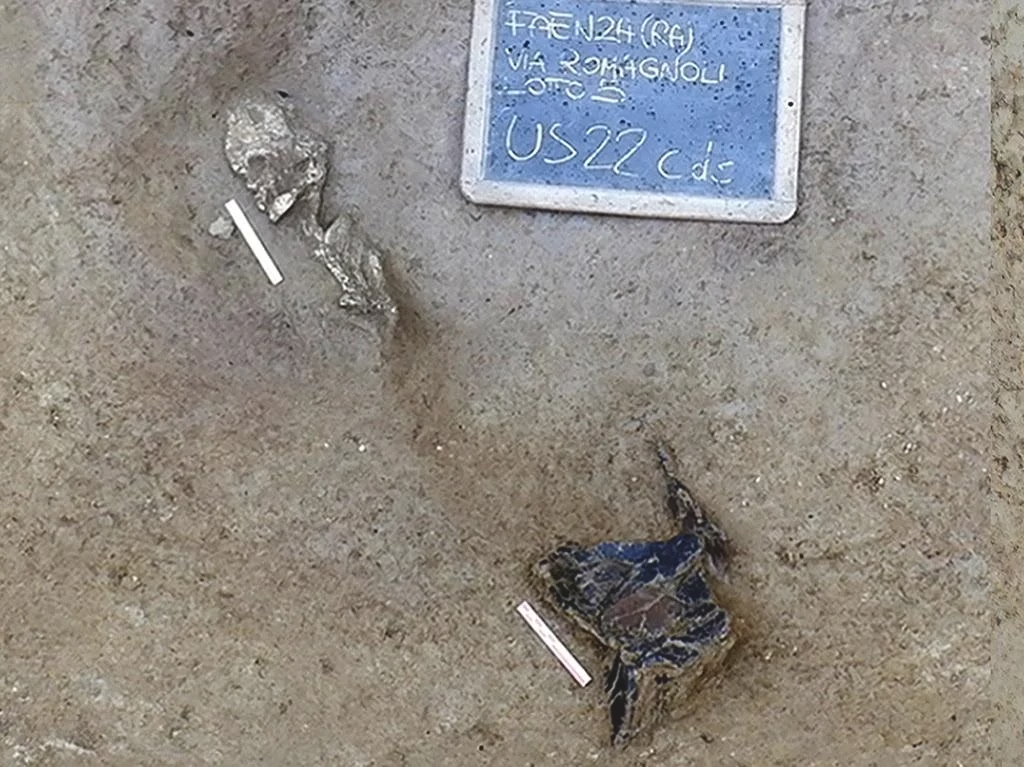Archaeologists in northern Italy have uncovered the fragile remains of a Copper Age infant in a well near Faenza — a discovery that sheds light on ancient European genetics and prehistoric migrations.
During a routine excavation ahead of a construction project near the city of Faenza, researchers stumbled upon what initially appeared to be just a few scattered bone fragments and dental remains. But this small find has turned into a major scientific breakthrough.
Led by a team from the University of Bologna, researchers used state-of-the-art techniques to reconstruct crucial details about the child’s life, health, and ancestry — despite the severe degradation of the remains.
Cutting-Edge Science Unlocks Secrets from Fragile Bones
Traditional osteological methods yielded minimal results due to the poor preservation of the bones. To overcome this, the interdisciplinary team employed advanced tools such as dental histology, radiocarbon dating, biogeochemistry, paleoproteomics, and ancient DNA (aDNA) analysis.

Through microscopic examination of two teeth — a baby molar and a developing permanent molar — researchers were able to determine that the child died at around 17 months old. The dental tissues showed no signs of early life stress or malnutrition, suggesting the child had a healthy start in life.
Rare Genetic Marker Found in Infant DNA
The sex of the child was confirmed to be male through both proteomic analysis of tooth enamel and genomic testing of bone fragments.
Most notably, the infant’s DNA revealed a rare mitochondrial haplogroup, V+@72, which has only been identified once before — in a Copper Age necropolis in northwestern Sardinia. This maternally inherited genetic signature is virtually absent in modern European populations, except among the Saami people of northern Scandinavia and some groups along Spain’s Cantabrian coast.
This finding hints at undocumented prehistoric migrations or long-distance cultural interactions across Europe thousands of years ago.
Science Reconstructs the Voice of the Distant Past
The research, recently published in the Journal of Archaeological Science, involved scientists from nine institutions, including the Max Planck Institute for Evolutionary Anthropology and Columbia University’s Lamont-Doherty Earth Observatory.

Lead author Owen Alexander Higgins, a fellow at the University of Bologna’s Department of Cultural Heritage, emphasized the broader implications:
“Our research shows that even highly degraded osteological materials hold important information if examined using advanced methods.”
From Forgotten Bones to a Window into Prehistoric Europe
Far from being just another archaeological curiosity, the infant from Faenza offers a rare glimpse into Copper Age lifeways, genetic diversity, and the hidden movement of ancient peoples across the continent.
This discovery serves as a powerful reminder: even the smallest and most fragile remains can speak volumes about our collective past — if we know how to listen.
Cover Image Credit: In situ close-up of the Copper Age child’s skeletal fragments at the excavation site. Courtesy of the Ministry of Culture – Superintendency for Archaeology, Fine Arts, and Landscape (Ravenna, Forlì-Cesena, Rimini).
Higgins, O. A., Fontani, F., Lugli, F., Silvestrini, S., Vazzana, A., Latorre, A., … Benazzi, S. (2025). Reconstructing life history and ancestry from poorly preserved skeletal remains: A bioanthropological study of a Copper Age infant from Faenza (RA, Italy). Journal of Archaeological Science, 180(106291), 106291. doi:10.1016/j.jas.2025.106291




